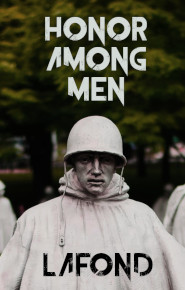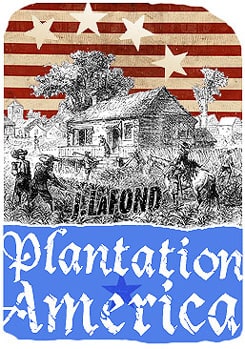The following information is adapted from They Were White And They Were Slaves: The Untold History of the Enslavement of Whites in Early America by Michael A Hoffman II, 1991, Wiswell Ruffin House, Dresden, New York
“In colonial America, White people could be enslaved for such an offense as missing church more than three times…”
-M. A. Hoffman II
In Chester County, Pennsylvania, in the very heart of the country where Peter’s sad story develops into a white slave holocaust, William Fisher was sentenced to an additional six years and 250 days for running away in June 1732. The summer before, Lawrence Finny, another slave of the Quaker State, was sentenced to an additional seven years and eleven months.
Terms of extended labor went as high as fifty years, and many masters lied to local assemblies and magistrates, making false claims of theft or conspiracy against their slaves in order to extend terms of free labor. The best ruse was to starve a slave and then have them convicted of stealing food and sentenced to extended servitude.
However, the best way to get additional labor out of slaves was to let them have sex, or to rape them and produce a valuable commodity, a child. In actuality a pregnant slave girl gained the master up to three benefits:
1. He could extend the sentence of the mother
2. He could extend the sentence of the father
3. He could sell or maintain ownership of the baby.
The latter was thought to have been a conditioned suffered only by blacks. However, according to Bruce Levine in Who Built America, women who gave birth while enslaved did additional time and had their baby taken and sold for a few pounds of tobacco.
In 1720, in Virginia, Margaret Micabin, owned by David Crawley and impregnated by a man named Sadler, gave birth to a baby who became the property of David Crawly for 31 years, at a time when people of the servant class rarely lived past 35 years.
What was the fate of these infant slaves?
In the 1600s and 1700s, most were worked and/or beaten to death, if available—and admittedly sparse—census data is any indication. As with black slaves, once a servant was unable to work, the master was no longer obliged to house, clothe or feed them, and whether sick, injured or in old age, might be left to starve in an unheated winter hut in the forest, essentially constructed as a living coffin.
In 1765, the Virginia Assembly humanly reduced the term of enslavement for “obscene” children from 31 years to a mere 21 years for boys and only 18 years for girls. The latter provision was related to the need for fertile young wives to replace the worn out wombs of the aging wives of slave masters.
In Virginia, in 1769, a mere 7 years before the American War for Independence, where godlike George Washington was a slave owner of power and influence, the church wardens were instructed to sell the children of free women if they were had out of wedlock.
More information on this abominable practice, which formed the basis for American colonial life, can be found in Mister Hoffman’s 86-page book, including six pages of bibliographic sources.











